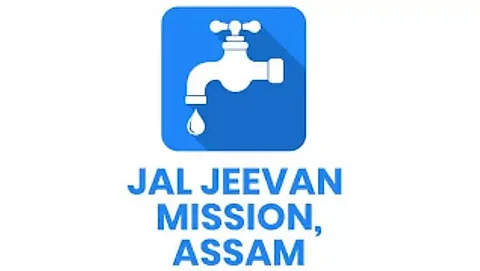
- Home
- Live Blog
- Breaking News
- Top Headlines
- Cities
- NE News
- Sentinel Media
- Sports
- Education
- Jobs

STAFF REPORTER
GUWAHATI: The Centre's ambitious programme Jal Jeevan Mission (JJM) has achieved 22.17 per cent success in Assam, a rise of 10 per cent from August 2019.
The 'Jal Jeevan Mission' is envisioned to provide safe and adequate drinking water through individual household tap connections by 2024 to all households in rural India. With the launch of 'Jal Jeevan Mission', the government will try to raise awareness among stakeholders and for greater transparency and accountability of schemes under the initiative.
Till August 15, 2019, only 1.11 lakh (1.76 per cent) households in Assam out of a total 63,35,015 households in 25,335 villages, had a tap water supply.
In the last 22 months, 6.88 lakh households (10.87 per cent) in Assam have been provided tap water connections, thus 7.99 lakh households (12.63 per cent) are having a tap water supply.
Officials claimed that the State would meet the target of the Jal Jeevan Mission even before the 2024 deadline.
The State has to provide a tap water supply to the remaining 55.35 lakh households in the next three years. The State government has planned to provide tap water connections to 22.63 lakh households in 2021-22, 20.84 lakh households in 2022-23, and 13.20 lakh tap-water connections in 2023-24. The Centre has allocated Rs 5,601 crore to the State under the JJM for 2021-22, state the Ministry of Jal Shakti.
In 2020-21, the Central government had allocated Rs 1,608.51 crore to the State under the Mission that aims to provide tap water connections to all rural households by 2024.
Under the Mission, works are on to make some defunct PWSS (piped water supply schemes) run by Public Health Engineering Department (PHERD) functional.
Of the 8,256 PWSS completed up to February 2020 across the state, 27.91 per cent (2,305 schemes) have not been said to be defunct. The number of functional schemes is higher than the number of functional schemes under PHED.
In 2020, the Standing Committee of the Assam Legislative Assembly on PHED had recommended that all the defunct schemes be rectified at the earliest.
According to the report, the highest number of defunct schemes as against the completed ones (division-wise) is as follows: Dhubri (107 of 184 completed PWS schemes); Rangia (105 of 161); Tinsukia (97 of 184); Karimganj-II (81 of 134); Bokakhat (78 of 138); Morigaon (72 of 129).
Due to power cuts following non-payment of bills and failure to correct various technical problems at the proper time often lead to such issues, informed sources.
M0st of the schemes are lying defunct due to widening of rural roads, old age of schemes, drying up of sources of water, damage due to floods and other natural resources, etc. PHE has 6,027 functional water supply schemes in the state.
Also Watch: